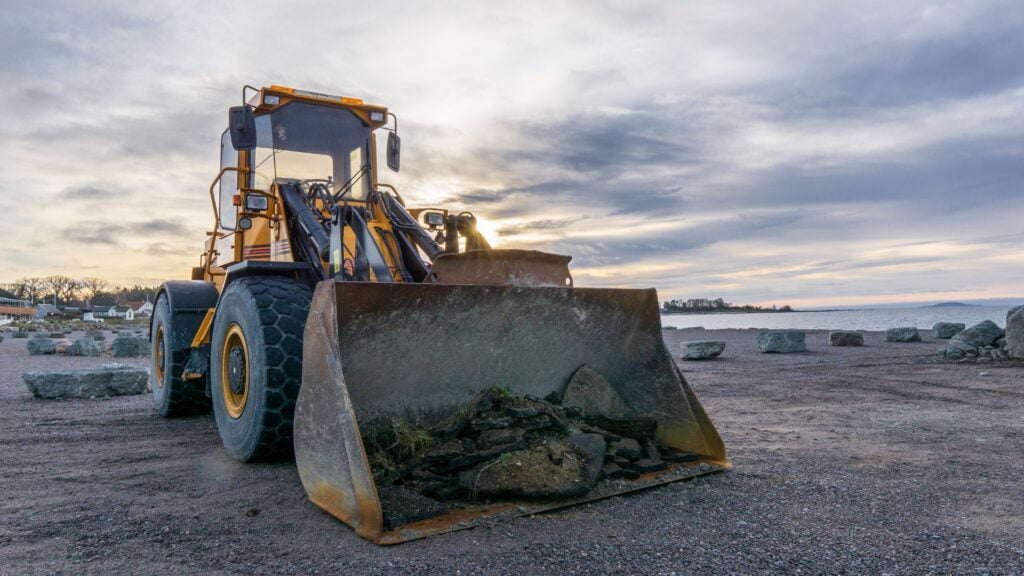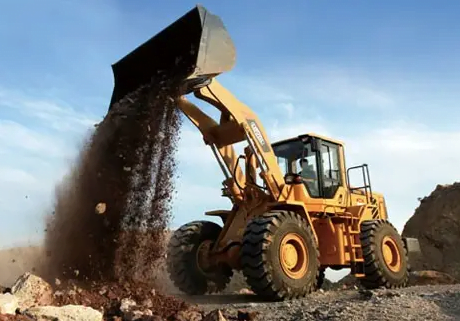Bulldozer transport has undergone remarkable advancements in recent years, transforming the landscape of construction and infrastructure projects. These developments have revolutionized the efficiency, safety, and environmental impact of moving heavy machinery. In this article, we’ll explore ten of the latest breakthroughs in bulldozer transport that are shaping the industry’s future.
Table of Contents
- Introduction
- Electric Bulldozer Transport: A Sustainable Shift
- Autonomous Bulldozer Carriers: The Rise of AI
- Advanced Tracking and Navigation Systems
- Efficient Loading and Unloading Mechanisms
- Telematics Integration for Real-time Monitoring
- Enhanced Safety Features for Operator and Cargo
- Innovations in Suspension and Shock Absorption
- Tackling Challenging Terrains with Precision
- Hybrid Bulldozer Carriers: Merging Power Sources
- Conclusion
- FAQs
Introduction
In the dynamic field of construction, bulldozer transport plays a pivotal role in ensuring smooth operations. Recent advancements have significantly elevated this process, focusing on sustainability, automation, safety, and performance. Let’s delve into the ten latest developments that are redefining bulldozer transport.
Electric Bulldozer Transport: A Sustainable Shift

In the realm of construction and heavy machinery, the emergence of electric bulldozer transport signifies a profound shift towards sustainability and environmental consciousness. This transformative trend is not merely a passing fad; it’s a pivotal step towards a greener future that simultaneously addresses efficiency and ecological concerns.
The integration of electric propulsion systems in bulldozer carriers is revolutionizing the way construction projects are executed. Unlike their conventional diesel counterparts, electric bulldozer carriers produce zero tailpipe emissions, minimizing air pollution and reducing the industry’s carbon footprint. This sustainable shift aligns with global efforts to combat climate change and adhere to stricter emissions regulations. Beyond the ecological benefits, electric bulldozer transport also brings about operational advantages. The electric powertrains offer instantaneous torque delivery, enhancing the bulldozer’s performance during demanding tasks. Moreover, the quiet operation of electric carriers significantly reduces noise pollution, contributing to improved working conditions on construction sites and fostering better relationships with surrounding communities.
Autonomous Bulldozer Carriers: The Rise of AI
The ascent of autonomous bulldozer carriers powered by Artificial Intelligence (AI) marks a monumental leap forward in the realm of construction and heavy machinery. This evolution is not just about leveraging advanced technology; it’s about fundamentally reshaping the way construction projects are planned, executed, and optimized.
The integration of AI in bulldozer carriers empowers these machines with a remarkable level of intelligence and adaptability. These carriers are equipped with a sophisticated array of sensors, cameras, and LiDAR systems that enable them to perceive and understand their environment in real-time. This sensory input is processed by AI algorithms, enabling the carriers to make split-second decisions, navigate complex terrains, and avoid obstacles with an unprecedented level of accuracy. This level of autonomy not only reduces the reliance on human operators but also enhances safety on construction sites by minimizing the risk of human error.
Advanced Tracking and Navigation Systems
The integration of advanced tracking and navigation systems into bulldozer transport represents a significant leap forward in optimizing construction operations. These systems are not just about knowing where a bulldozer carrier is; they encompass a comprehensive approach that revolutionizes how construction projects are planned, monitored, and ultimately executed.
Modern tracking and navigation systems utilize a combination of GPS technology, real-time data transmission, and sophisticated software to provide construction managers with unprecedented visibility into their fleet’s movements and statuses. This data-rich approach enables precise route planning, allowing bulldozer carriers to avoid traffic congestion, road closures, and other obstacles that could otherwise delay operations. Real-time tracking also facilitates dynamic adjustments, ensuring that resources are allocated efficiently and that projects stay on schedule. Furthermore, these systems offer insights into machine performance, fuel consumption, and maintenance needs, allowing for proactive management that reduces downtime and optimizes overall fleet efficiency.
Efficient Loading and Unloading Mechanisms
The evolution of efficient loading and unloading mechanisms in bulldozer transport has revolutionized the way heavy machinery is moved onto carriers, streamlining operations and enhancing overall productivity. These mechanisms are not just about minimizing manual effort; they represent a strategic approach that maximizes efficiency while minimizing downtime.
Incorporating hydraulic systems and automation, modern loading and unloading mechanisms have significantly reduced the time and labor required to secure bulldozers onto carriers. The hydraulic arms and lifting mechanisms can be controlled with precision, ensuring a smooth and stable process that minimizes the risk of damage to both the machinery and the carrier. This efficiency extends beyond just the loading and unloading process – it also reduces the time bulldozers spend transitioning between sites, optimizing the utilization of equipment and resources.
Telematics Integration for Real-time Monitoring
The seamless integration of telematics into bulldozer transport has ushered in a new era of real-time monitoring and data-driven decision-making. This integration is more than just about tracking locations; it encompasses a comprehensive approach that empowers construction stakeholders with valuable insights into their fleet’s performance, efficiency, and maintenance needs.
Telematics systems leverage advanced sensors, GPS technology, and data connectivity to provide continuous updates on various aspects of bulldozer carriers. From fuel consumption and engine performance to operating conditions and maintenance requirements, this real-time data is transmitted to a centralized platform accessible to operators and managers. This transparency enables timely interventions, such as scheduling maintenance before issues become critical or optimizing routes to minimize fuel consumption. Furthermore, telematics systems contribute to a safer working environment by providing alerts for potential safety hazards or unauthorized usage, enhancing the overall safety culture on construction sites.
Enhanced Safety Features for Operator and Cargo
The incorporation of enhanced safety features in bulldozer transport has brought a new level of protection for both operators and the valuable cargo being transported. These safety advancements are not only about compliance; they represent a concerted effort to mitigate risks, prioritize well-being, and ensure the seamless flow of operations.
Modern bulldozer carriers are equipped with a range of safety technologies, including collision avoidance systems, automated emergency braking, and load stabilization mechanisms. These systems work together to create a safer working environment for operators, reducing the likelihood of accidents caused by blind spots, sudden obstacles, or operator fatigue. Additionally, the incorporation of load stabilization mechanisms ensures that the bulldozer remains securely in place during transit, preventing damage to both the machinery and the carrier itself.
Innovations in Suspension and Shock Absorption

The realm of bulldozer transport has experienced remarkable advancements in suspension and shock absorption technology, elevating the quality of machinery transport across diverse terrains. These innovations aren’t merely about creating a smoother ride; they embody a strategic approach that enhances the durability of machinery, optimizes operator comfort, and ensures safer transport operations.
Modern suspension systems incorporate cutting-edge technologies such as adjustable dampers, air springs, and adaptive controls. These innovations allow bulldozer carriers to automatically adjust their suspension settings based on the terrain’s conditions, ensuring optimal shock absorption and stability. This adaptability not only prevents potential damage to both the bulldozer and the carrier but also enhances operator comfort by reducing vibrations and jolts during transit. Moreover, these advancements enable bulldozer carriers to navigate challenging terrains more effectively, mitigating the risk of accidents and delays caused by uneven surfaces.
Tackling Challenging Terrains with Precision
In the landscape of bulldozer transport, the advent of technologies focused on tackling challenging terrains with precision has ushered in a new era of efficiency and effectiveness. This advancement isn’t just about overcoming obstacles; it represents a strategic approach that optimizes machinery performance, minimizes operational risks, and ensures timely project completion even in the most demanding environments.
The integration of GPS and advanced terrain mapping technology empowers bulldozer carriers with the ability to navigate complex terrains with unparalleled accuracy. These systems provide real-time data on terrain contours, elevation changes, and potential obstacles, enabling carriers to chart the most optimal paths and avoid potential hazards. This level of precision not only enhances the safety of the transport process but also reduces the likelihood of delays caused by unexpected obstacles or deviations from the planned route.
Hybrid Bulldozer Carriers: Merging Power Sources
The emergence of hybrid bulldozer carriers, seamlessly merging conventional and alternative power sources, signifies a pivotal shift towards more sustainable and versatile construction machinery. This innovation isn’t simply about combining technologies; it embodies a strategic approach that optimizes energy usage, reduces emissions, and enhances operational flexibility.
Hybrid bulldozer carriers integrate both traditional internal combustion engines and electric power systems, offering a dynamic blend of power sources for various operational scenarios. During tasks that demand high power output, the internal combustion engine can take the lead, while the electric system shines during lighter-duty operations, minimizing fuel consumption and emissions. This adaptable power distribution not only enhances overall efficiency but also reduces the carbon footprint of construction projects, aligning with the industry’s increasing focus on environmental responsibility.
Conclusion
The landscape of bulldozer transport is undergoing a remarkable transformation. From electric and autonomous carriers to advanced safety features and hybrid solutions, the industry is embracing innovation like never before. These developments are not only enhancing efficiency and safety but also contributing to a more sustainable and environmentally conscious construction sector.
FAQs
- Q: Are electric bulldozer carriers powerful enough for heavy-duty tasks?
A: Yes, advancements in battery technology have led to electric carriers with impressive power and performance capabilities. - Q: How do autonomous bulldozer carriers navigate complex construction sites?
A: Autonomous carriers use AI algorithms and sensors to perceive their surroundings, making real-time navigation decisions. - Q: What benefits do hybrid bulldozer carriers offer?
A: Hybrid carriers combine the best of electric and traditional engines, resulting in reduced emissions and improved fuel efficiency. - Q: How do advanced tracking systems improve transport operations?
A: Advanced tracking systems provide real-time data that optimizes route planning, resource allocation, and scheduling. - Q: Are these advancements increasing the cost of bulldozer transport?
A: While initial costs may be higher, the long-term benefits in terms of efficiency, safety, and sustainability outweigh the investment.

